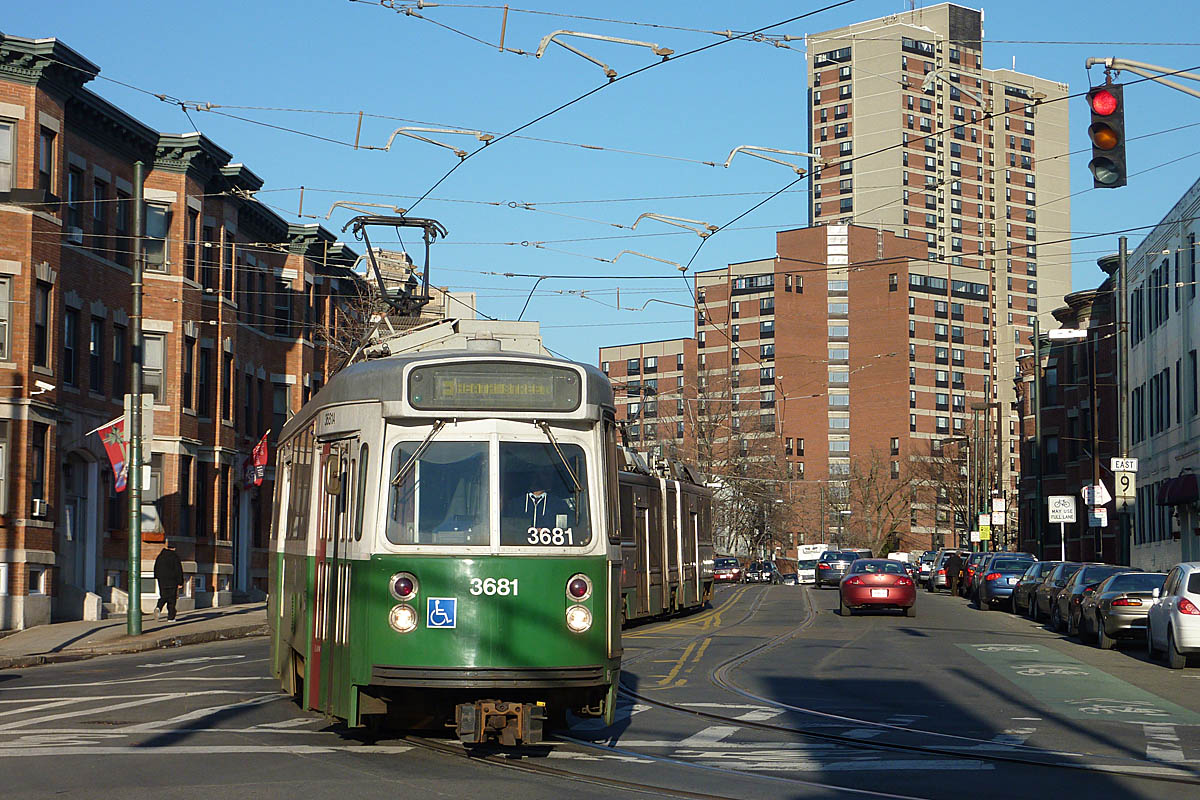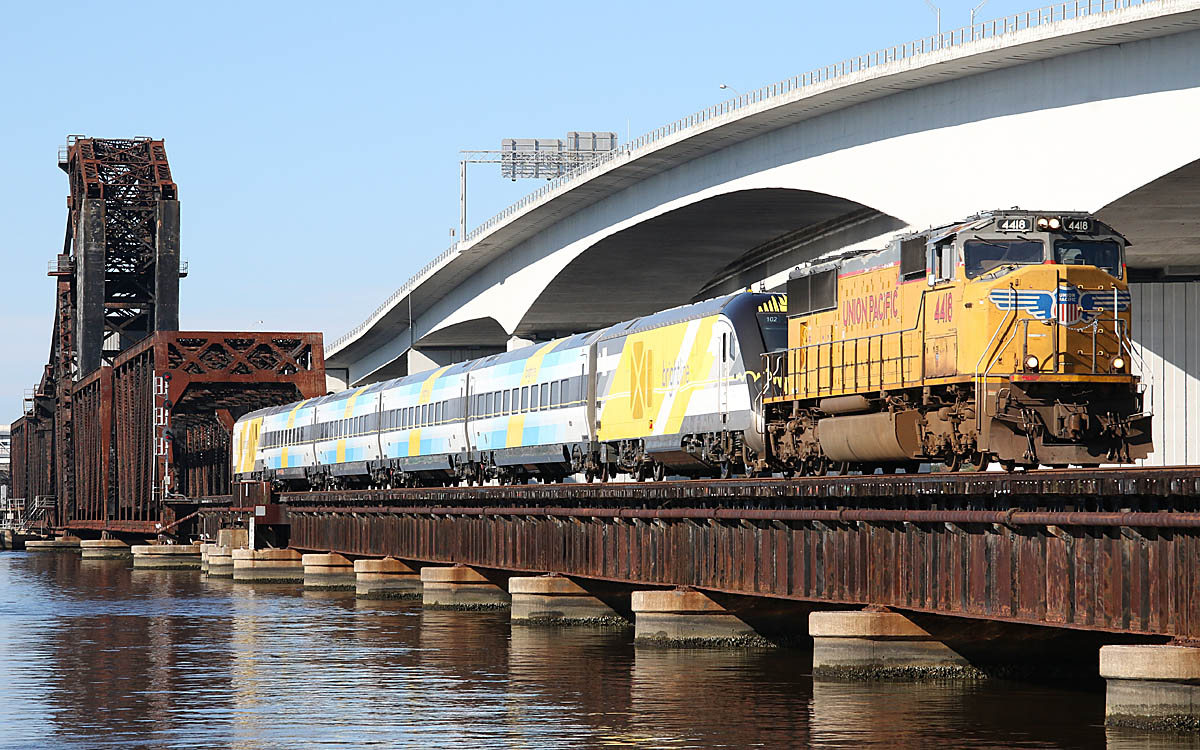John Dalton, program manager for the Green Line Extension, outlined some of those lessons Wednesday on the final day of the National Railroad Construction and Maintenance Association Conference, while also providing a brief overview of the larger spending plan.
The Green Line project will extend the existing light rail line, which includes the nation’s oldest subway line, dating to 1897, north and west from its current terminus at Lechmere into Somerville and Medford, Mass., on two branch lines. The project is unusual in that both branches will be built adjacent to existing MBTA Commuter Rail lines, which sit below street level in open cuts.
The project has had a bumpy history. Planning began in 2012, but was halted in 2015 because of an inability to bring the program in within its budget. It was revived in 2016 with several aspects of the project scaled back, such as simplified stations, a smaller vehicle maintenance facility, an increase in upgrading rather than replacing bridges, and a reduction in some trench work.
Dalton said that, in addition to reducing the budget, the revived program introduced a greater degree of cost certainty by introducing an “affordability limit.” Companies interested in bidding on the project were told the project had a $1.319 billion cap; anyone with a bid above that number was eliminated.
Companies wililng to make a bid under that number were also given the opportunity to add in six features that had been eliminated, if they could do so within that constraint; the winning bid was judged on both the dollar figure and the number of added features.
Ultimately, the design-and-build contract went to a consortium, GLX Construction, headed by Fluor, Middlesex Corp., Herzog, and Balfour Beatty, which came in with a bid of $1.082 billion that included all six optional features.
“So we achieved what we wanted to,” Dalton said. “We maximized scope without putting the whole project at risk. We made it an option within the bidding process, in the competitive environment of the bidding process, so it wasn’t a change order after the fact.”
Groundbreaking was held for the project in June 2018, and is expected to be completed in 2021. It will add six new stations on its two branches, and is projected to generate up to 50,000 additional riders daily.
In all, it represents $1.23 billion of the MBTA’s $8-billion, five-year plan. Other portions of the plan are $3.76 billion to address reliability and $2.95 billion for modernization. The largest portions of the reliability spending are $1.27 billion for new rolling stock; $938 million for track, signal, and power; $544 million for bridge and tunnel work; and $428 million for stations. Making up the bulk of the modernization program is $1.57 billion for modernization of the Red and Orange subway lines; $630 million for commuter rail safety and resiliency, and $265 million for accessibility.
FLORIDA EAST COAST: Scott Bannwart, assistant vice president, engineering, presented Florida East Coast’s 2019 capital plan, which includes 145,000 feet (a little over 27 miles) of 136-pound rail installation; 20,000 feet (about 3.8 miles) of 115-pound rail installation; 11,500 concrete ties; 9,750 wood ties; systemwide surfacting; nine new turnouts, and 35 road crossings. The bridge program is still being formulated, but will include significant work on FEC’s Jacksonville drawbridge, built in 1926. About $1.9 million is allotted for signal and communications projects.
















The entire new route for the MBTA is just under 7 miles long. The costs escalate because the locals all want Taj Mahal train stations and bike trails built all over the area.
Charles, the Government Center Station was recently completely rebuilt, closed for two years to get it done. It’s gorgeous.
The vastly overcrowded Green Line is a victim of its own smashing success. The Green Line has a rapid transit traffic count crammed into trolley cars. It’s the polar opposite of the Red Line. Both lines, Red and Green, serve gargantuan traffic generators and both have huge traffic counts. The Red Line can handle its traffic. The Green Line can not.
Certainly it’s exciting to learn of the Green Line’s northward extension (the article above) where there’s plenty of traffic to be had. Here’s the problem. The Green Line already has far more traffic than it can handle. It would be great to see another several billion dollars fall from the clouds to rebuild (1) Government Center Station (2) Park Street Station and (3) the Riverside Line to the west (the Green Line’s “D” train) expanding capacity and bringing it up to full rapid transit standards.
As most of you know, the “D” Riverside branch of the Green Line is a former grade – separated New York Central commuter train branch electrified for trolley service. It’s not street running but it has pedestrian grade crossings at each of its stations which are glorified trolley stops with short platforms, limiting train length and thus creating ungodly crowding no matter the frequency.
The Green Line is and always will be streetcars. There are no high-level platforms. The current generation of streetcars (which look worn) have low floors (which is not the same as wheelchair access). Low floors means the a/c and other gear on the roof, making the cars topheavy.
Forgive me if recent events superseded my above comments. Although I’ve been in Boston since then I’ve not ridden MBTA since 2012.